Amongst the many winter birding highlights in South Korea are the concentrations of raptors at key wetlands, and amongst these, two species stand out in terms of their sheer majesty as well as for their global rarity: Cinereous Vulture Aegypius monachus and Stellers's Sea Eagle Haliaeetus pelagicus.
Classified as near-threatened, the Cinereous (or Black) Vulture within Eastern Asia breeds in mainland China and Mongolia, with significant numbers moving south into South Korea for winter, from November onwards.
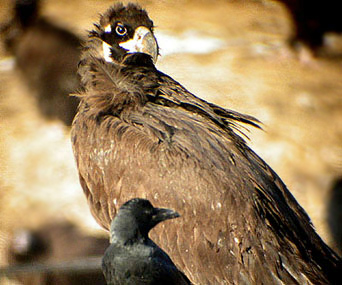
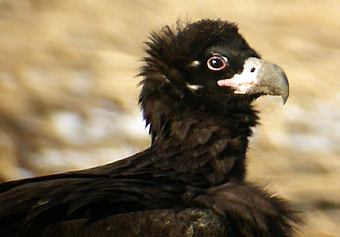
Cinereous Vulture with Large-billed Crow, Cheolwon (bottom)
Photos © Nial Moores
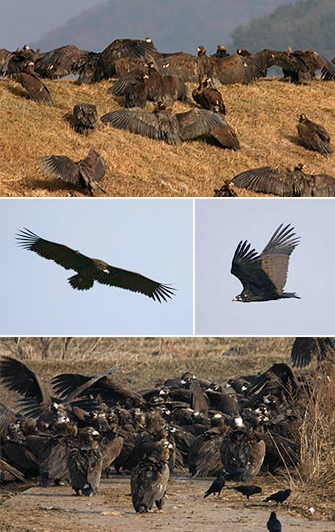
Photos © Charlie Moores.
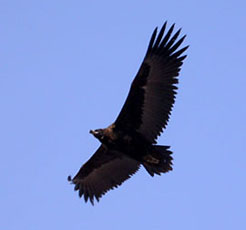
Photo © Nial Moores
Although a comprehensive survey of the species has not yet been conducted in South Korea, at least 300 and more probably well over 500 have been wintering here in recent years, with the largest concentrations in the northwest: over 200 in the DMZ, in the outstandingly important Cheolwon Basin, with “lesser” numbers in Pochon-Gun, and along the Han-Imjin river (where there were up to 140 on February 7, 2002). In addition, the species is regular in smaller numbers throughout the country, with exceptionally 100 recorded in the far southwest in 2002/2003 and up to 36 claimed in the Nakdong estuary in the far southeast, in November 2002.
Where do these vultures come from? At least some are wearing Mongolian wing-tags, and an important banding project is being undertaken this year by researchers in Mongolia. Several young Cinereous Vultures have been banded and wing tagged in central Mongolia as a part of a study of the species' breeding ecology.
All birds have one black coloured band on the left leg with a letter above a number (eg N 44). Many birds have black wing tags with white alpha numbers.
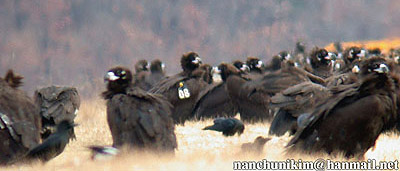
Now that the vultures have left the breeding area the researchers want to learn their locations to track their movements. It would greatly assist the project if any sightings of tagged birds could be sent to us and/or to the address below.(Please include your name, email address, and provide exact details of location, time, and description.)
Tseveenmyadag Natsagdorj
Ornithological Laboratory
Institute of Biology, Academy of Science
Ulaanbaatar 51,Mongolia.
Please e-mail: tseveenmyadag@magicnet.mn
The even more magnificent Steller's Sea Eagle is globally even rarer: classified as Vulnerable, Birdlife's Red Data Book gives less than 30 records in total for South Korea.


However, an increased interest in birding and the early beginnings of a network is revealing that the species is actually regular here in small numbers in mainly coastal areas, especially at small river-mouths along the east coast.
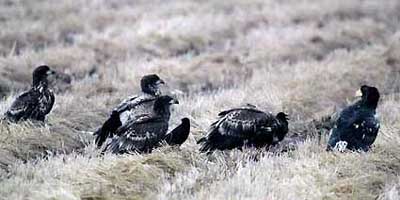

In winter 2002/03 apparently at least 12 and possibly closer to 20 were present nationwide, with 1 or 2 in the DMZ, up to 10 in total on the east coast (including a staggering six photographed at Gangreung), at least 4 in the Nakdong estuary, and one or two in the west, including a regularly returning individual at Seosan.
For more information on these species, be sure to visit Birdlife International's Red Data Book: Threatened Birds of Asia website, and please send in any sightings to us at sightings@birdskorea.org.



